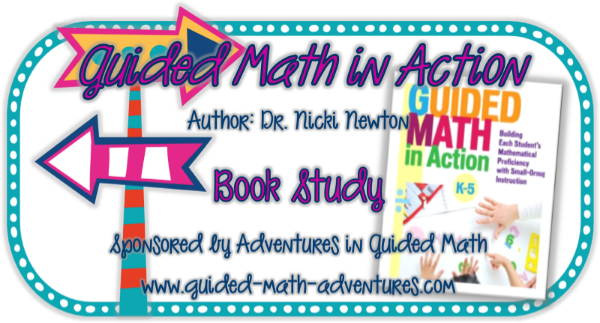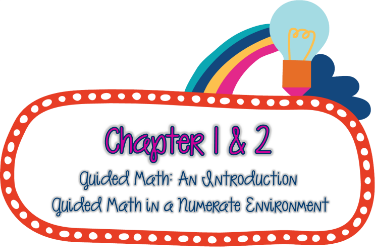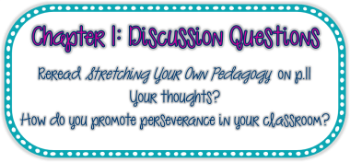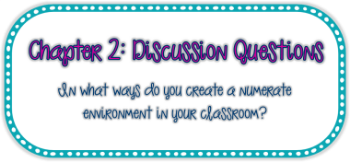
Welcome to the first installment of the Guided Math in Action book study. I hope that you have had an opportunity to read through Chapters 1 and 2. If not, please consider picking up a copy of your own (available at Amazon.com). I promise it is a book that you will refer to again and again.

In the first chapter, we are introduced to a class that is involved in a guided math lesson. The teacher and her students were involved in a mini-lesson on subtraction with regrouping. I learned about a really great idea for students who aren't able to grasp the idea of Base-10 blocks or numbers. The teacher gave the students bundles of sticks. Each bundle of sticks had 10 sticks. When a student needed to regroup, he "broke" apart the bundle and moved those individual sticks to the ones place. Brilliant! I'm ashamed to admit that I had never considered doing that, but now I have a project!
The teacher worked with the students on a few questions together, then allowed them time to work independently. The other students in the class were involved in independent or group activities. After the group time was finished, the teacher walked the classroom and took notes (this is a perfect opportunity to use Evernote!) on what the students were doing. At the end of the math period, the class joined back up to share what they were doing in math that day. It was very interesting to see inside another teacher's classroom.

Question 1: Stretching myself can be difficult at times. I went to a college that had a very distinct way of teaching a class. There was little in the way of differentiation. We were taught to teach to the middle...not exactly the best way of doing things. I am very, very comfortable doing whole class teaching, but guess what? Not every student can learn that way! I have to stretch myself and be willing to try new things to help my students learn. If this means I am doing small groups with whiteboards one time and one-on-one with modeling clay another time, that's what I need to be willing to do. And while it can be difficult to keep track of the educational needs of 20+ students (hello, Evernote!), I need to come up with a way to do it. You may notice that I keep mentioning Evernote. Evernote is an app that is perfect for this.
Question 2: Third graders are the kings and queens of giving up before they even attempt to do something. If I had a dollar for every student who came up to me with the phrase "I don't get it!" before he had even put his pencil to the paper. In my classroom, we have a poster that says, "We Don't Do Easy." My students know they are responsible to keep trying a problem and to use multiple strategies in their attempt to solve a problem. There is no greater reward from me than a Knuckle Bump when a student works through and solves a problem she was struggling to solve.
In Chapter 2, Dr. Newton discusses the importance of a numerate environment. Such an environment allows the students to "safely" discuss their thinking and to challenge the thinking of other students. We want our students to be able to explain what they are thinking and how they were able to solve the problem.
Dr. Newtown also makes a big push for math workshop. While this is not the method that I currently use, many of the elements of math workshop can be found in my math classroom as well. The elements include:
- Calendar time
- Problem of the Day
- Whole Class Mini-Lesson
- Guided Math Groups/Centers
- Journals
Like I said above, I don't currently do a math workshop, but many of these elements (Problem of the Day, Mini-Lesson, Guided Math Groups, Centers, and Journals) are things I incorporate daily.

Question 1: While I believe that I have a numerate environment, I realize that there is always room for improvement. To that end, I am working to develop more math-related "decorations" for my classroom. I have started an "Anchor Charts" board on Pinterest. I am also looking for more ways to incorporate math word study. As I continue to develop these things, I will be certain to share them with you.
As I said at the beginning, I hope that you have been able to read along and are learning as much as I am. Please be sure to join me again on Sunday for Chapters 3 and 4.

I think the issue of perseverance is one of the biggest issues I have had. I agree with you totally, 3rd graders give up so easily. Not only do the "not get it", but they are often satisfied for a just passing grade/score. My goal this year is to start from day one working on this issue.
ReplyDeleteI now must check out Evernote! :0) I appreciate your honesty in responding to stretching your own pedagogy--It's not always an easy thing to do but a quest for us all. Thanks also for sharing your Pinterest anchor chart board--very helpful and a great idea! I look forward to reading your future posts...
ReplyDeleteSmiles,
Sarah
I read a bunch of stuff on Evernote and I really need to make a plan for how to use it in the classroom. As soon as I do, I will write some blog posts about it. It is a great tool.
DeleteI love "we don't do easy." I started teaching five years completely whole group...then I added Daily 5 to my reading block. Loved the small groups! I'm excited to start using small group instruction more in math this year.
ReplyDeleteCrystal
Teaching Little Miracles
That should be five years AGO!
DeleteAfter I put the poster up, my students would get all upset whenever I would use the word "easy." "Mr. Pearson, you said Easy. We don't do Easy!" It was awesome.
DeleteI love your idea to use Evernote! I've tried using it in the past, and I often find that it's still not my go-to app. Maybe I should look at it again!
ReplyDeleteMel
The Teaching Crew
I will definitely be checking out Evernote because keeping up with all the data is usually a stumbling block for me. Thanks for the tip.
ReplyDeleteThe Traveling Teacher